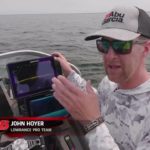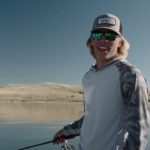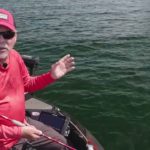Trolling Small for Early Walleyes
Trolling for early season walleyes is nothing new, particularly if you are talking Great Lakes or other “open water” scenarios. But when it comes to shallow structure on both natural lakes and reservoirs, trolling is not normally the first tactic that comes to mind. However, trolling can be the best way to target and trigger the most fish given the right circumstances. But while this kind of trolling has its similarities to the “Great Lakes” style trolling, there are some major differences you need to learn in order to get in on this bite!
Where this pattern really shines is when you find walleyes in “back bay” like areas with large flats, stained to dirty water, and a sharper break leading to 3 to 4 feet of water very near the shoreline. One of the big keys to this pattern is the bait size. You gotta think small! It’s early in the year, and most of the new year’s hatch has not had much time to grow yet. Keeping your offering small will have you more closely “matching the hatch”. Also, the smaller baits usually are not designed to dive very deep making them ideal for fishing shallower water.
Over the past couple seasons we have run into a few situations where this pattern absolutely dominated. One was in early June last year on the AIM tournament trail on the St. Mary’s River near Brimley, MI where we trolled the new 4 cm sized Berkley Flicker Shads in 3 to 4 feet of water along rock-to-muck transitions. The walleyes were keying on small baitfish, so running the baits back 50 to 60 feet on long rods kept the Flicker Shads just off the bottom and proved deadly on these early season fish. Those same little 4cm Flicker Shads also made a big impression when we took this tactic to the St. Louis River near Duluth, MN to shoot a TV show for The Next Bite with our good buddy and top-notch guide Jim Hudson of Ashland, WI. We originally went there to fish the “Big Water” for trophy walleyes, but ended up hammering lots and lots of nice fish in some shallow bays just inside the St. Louis River – all on the 4cm Flicker Shads.
Trolling in such shallow water has its challenges. As with other trolling patterns, spreading lures is important so that you are as efficient as possible at covering water and getting your baits in front of as many walleyes as possible. Utilizing Off Shore Tackle OR-12 Side Planer Boards to take the lines out to the sides of the boat is a great option if the area you are fishing is relatively clear of snags and cover like weeds, etc. However, what typically makes these large shallow areas so attractive to the walleyes is that they often do feature lots of cover in the way of weeds and/or wood that can make trolling with boards less than ideal. One of the reasons why dingy, dirty water is key to this presentation is that in the shallow water, the fish can be a little less spooky than they would be if the water was clear, so trolling over the top of them is less apt to turn them off. Therefore, we often opt for trolling with long rods and flat lines rather than boards.
A good rod set-up would be to use ten foot trolling rods, like the Bass Pro Shops Walleye Angler Rod, and run those sticking straight out from the gunnels as the outside rods, then run shorter eight foot trolling rods angled towards the back of the boat as the inside rods. In the scenarios mentioned above, we were usually targeting fish in 3 to 5 feet of water so running the cranks 50 to 60 feet back was all that was needed to put them in the strike zone.
You can run this kind of trolling pattern using a small kicker motor like the Mercury 9.9 4-stroke Pro-Kickers we run, or what can often be even more effective is to use your bowmount trolling motor to pull things along. Typical trolling speed for this pattern is about 2 mph, and in most conditions the bowmount will have no problem doing that. Plus it gives you the added advantage of a more quiet approach and increased maneuverability, especially if you need to turn on a snag or to avoid any shallow water obstacles like large stumps, rocks, etc.This can be a deadly pattern early in the season, as soon as water temps begin to reach 50 degrees and can remain effective well into the season as long as water temps don’t go above 80 degrees. Once the water gets that warm it tends to push the walleyes out toward cooler locales.
While we have seen this pattern primarily on waters connected to the Great Lakes, we are sure that with some experimentation and serious froggin’ around, more about this shallow trolling pattern will reveal itself in the future. Bottom line is there are lots of walleyes using shallow water areas that in the past were going virtually untouched. With trolling tactics like this however, it won’t be long before you’ll be trolling up your Next Bite.





